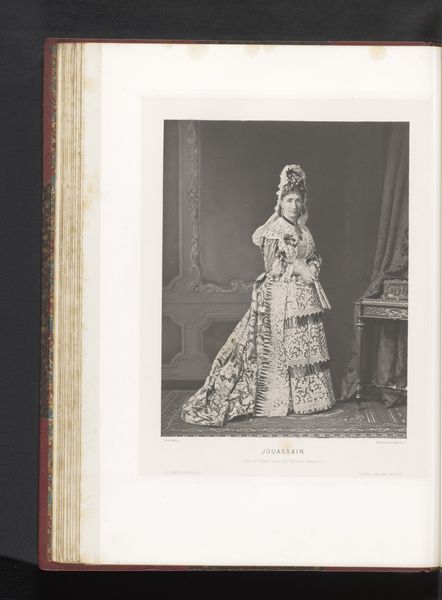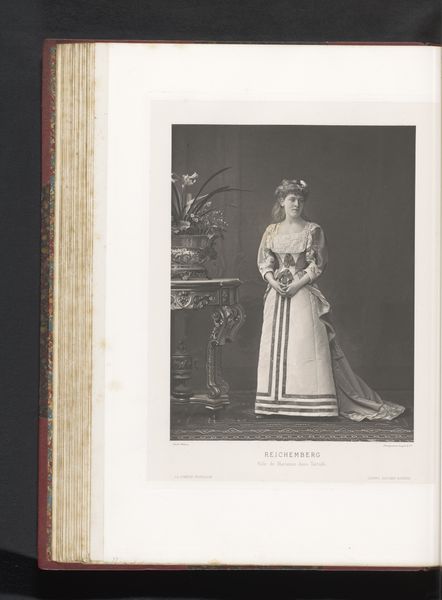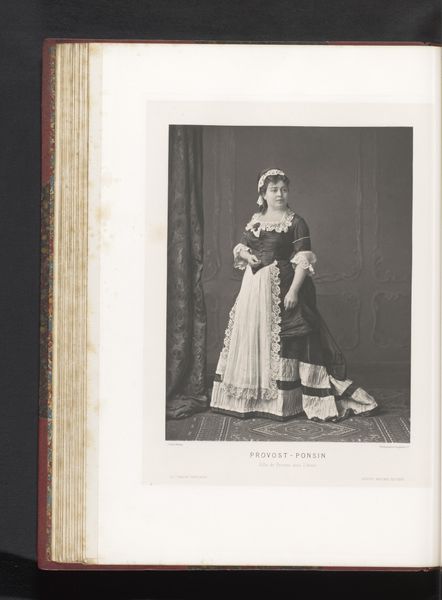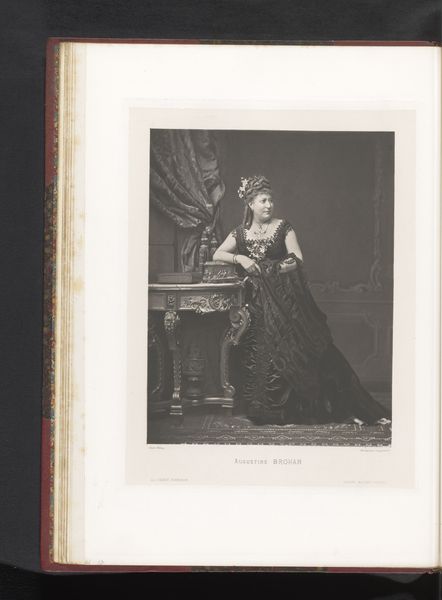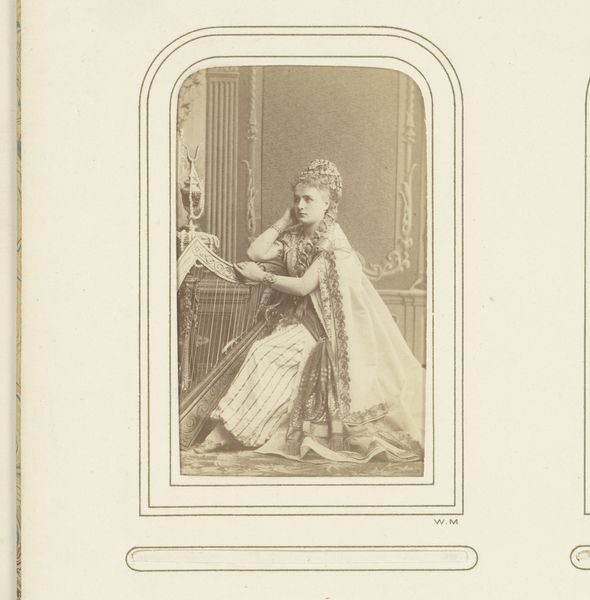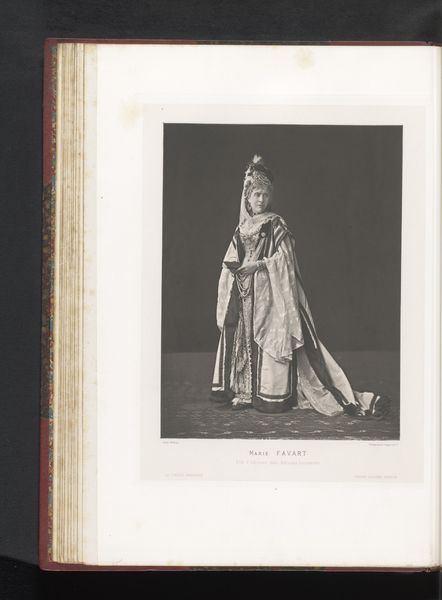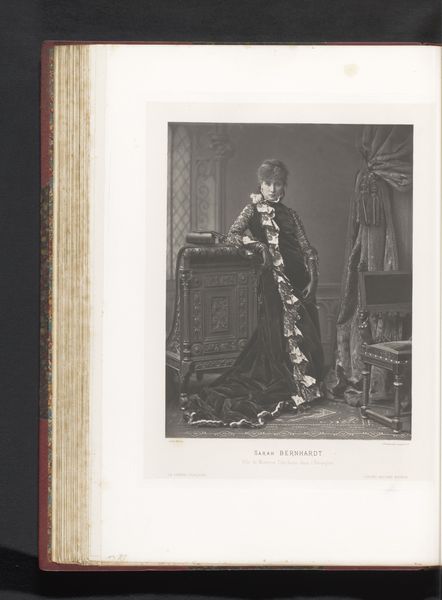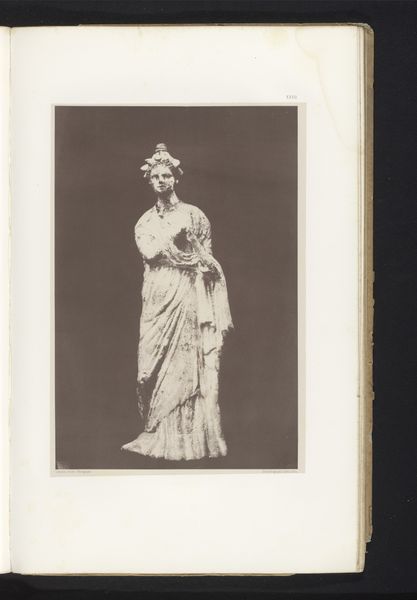
Portret van Sophie Croizette in de rol van Marianne in Les Caprices de Marianne before 1880
0:00
0:00
anonymous
Rijksmuseum
#
portrait
# print
Dimensions: height 267 mm, width 207 mm
Copyright: Rijks Museum: Open Domain
Editor: Here we have a photograph, or rather a print made from a photograph, called "Portrait of Sophie Croizette in the role of Marianne in Les Caprices de Marianne," dating from before 1880. It’s currently displayed at the Rijksmuseum. There's something striking about the textural contrast in this piece, between the smooth drapery and the patterned dress. What strikes you most about this image? Curator: The interplay of lines is certainly noteworthy. Notice the severe verticality established by the window and curtain juxtaposed against the diagonal sweep of the sitter's gown. Further, consider how the geometry of the cabinet mirrors, albeit in miniature, the structure of the window itself. What do these repeated forms suggest? Editor: Perhaps a mirroring of inner and outer worlds? Or a reflection on societal constraints, considering it's a theatrical role? Curator: Indeed. Note also how the stark contrasts of light and shadow carve out the space, delineating volumes and guiding the eye. The photograph doesn't simply record, it constructs a visual argument through formal means. Is it not true that her gaze evades our own, directing our focus to the artifice surrounding her? Editor: That’s a great point! Her averted gaze and the elaborate set really emphasize artifice. So, through its formal elements—the composition, lines, light, and gaze—the photograph presents the constructed nature of image and identity. I see it now. Curator: Precisely. A photograph is never simply a reproduction of reality. Formal analysis allows us to understand its rhetorical function. Editor: I'll definitely pay more attention to composition and the interplay of forms now. Thanks for the insightful perspective!
Comments
No comments
Be the first to comment and join the conversation on the ultimate creative platform.
